Rejuvenate Your Senses with a Hot Stone Massage
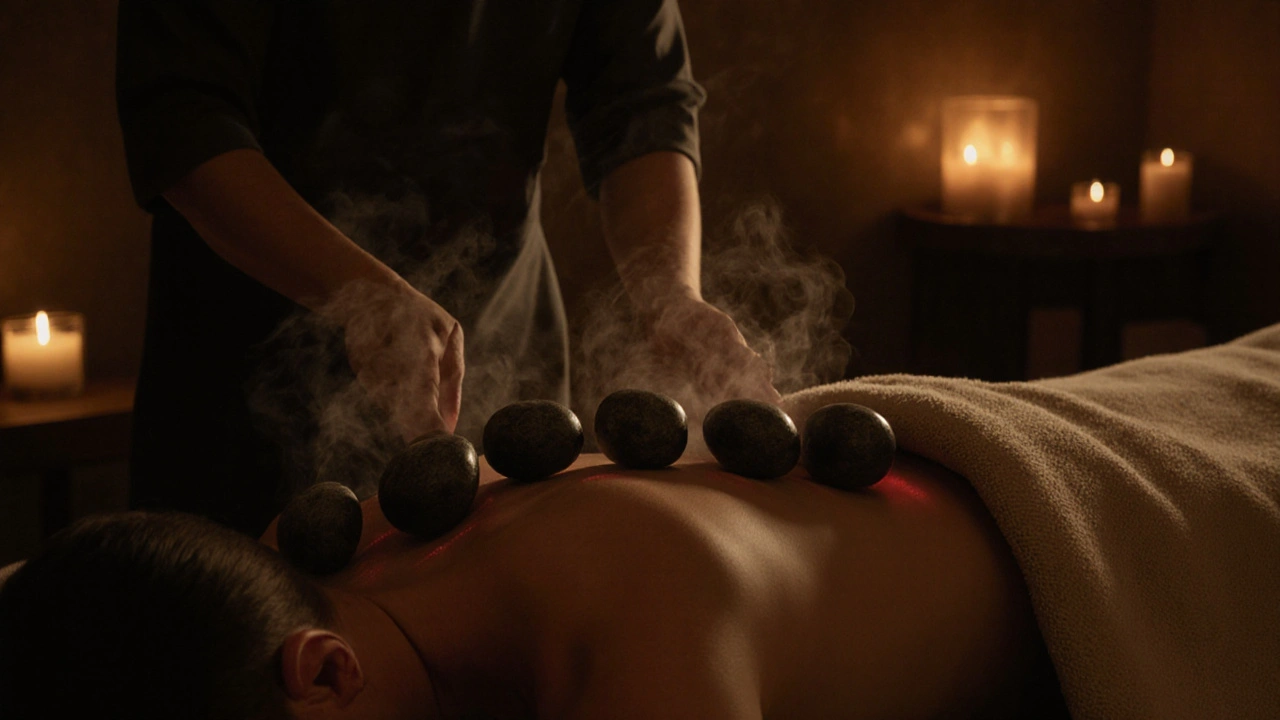
Imagine lying down as warm stones, smooth and heavy with heat, glide across your back. The heat doesn’t just sit on your skin-it seeps in, melting tension you didn’t even know you were carrying. This isn’t magic. It’s hot stone massage, a therapy that’s been used for centuries and is now backed by modern understanding of how heat affects muscle and nervous system response.
How Hot Stone Massage Works
Hot stone massage uses basalt stones, a type of volcanic rock that holds heat exceptionally well. These stones are heated to between 120°F and 130°F (49°C to 54°C) and placed along your spine, in your palms, between your toes, or directly on tight muscle groups. Therapists also use them as tools, gliding them over your skin in slow, rhythmic motions.
The heat triggers vasodilation-your blood vessels widen. This boosts circulation, bringing more oxygen and nutrients to tired muscles. At the same time, the warmth signals your nervous system to switch from fight-or-flight mode to rest-and-digest. Your heart rate slows. Your breathing deepens. The stress hormone cortisol drops.
Studies from the Journal of Alternative and Complementary Medicine found that participants who received hot stone massage reported a 40% greater reduction in muscle tension after one session compared to those who got a standard Swedish massage. The heat doesn’t just relax muscles-it resets your body’s stress response.
What Makes It Different from Other Massages
Hot stone massage isn’t just a Swedish massage with rocks. The stones do work your therapist can’t replicate with hands alone. They provide deep, consistent heat that penetrates layers of muscle without requiring heavy pressure. This makes it ideal for people who want deep relaxation but can’t handle deep tissue work.
Unlike aromatherapy massage, where scent drives the effect, or sports massage, which targets performance recovery, hot stone therapy is about sensory reset. The weight of the stones, the rhythm of their movement, and the steady warmth combine to create a meditative state. Many clients describe it as feeling like they’re floating.
It’s also gentler than deep tissue or trigger point therapy. If you have fibromyalgia, arthritis, or chronic fatigue, hot stone massage can offer relief without triggering pain. A 2023 review in Complementary Therapies in Clinical Practice showed that 78% of participants with chronic pain reported improved sleep and reduced stiffness after a series of four weekly sessions.
What to Expect During Your First Session
Your session starts with a quick check-in. The therapist will ask about any medical conditions, recent injuries, or areas of extreme sensitivity. If you’re pregnant, have open wounds, or have poor circulation, they’ll adjust the technique or skip the treatment entirely.
You’ll undress to your comfort level and lie under a towel on a heated table. The therapist will warm the stones in a water bath, never a microwave. They’ll test each stone on their wrist before placing it on you-this ensures the temperature is safe and comfortable.
Stones are placed along your back, from your neck to your tailbone. They might be stacked between your shoulder blades or tucked under your knees to support your spine. Then, the therapist begins gliding the stones using oil. The motion is slow, deliberate, and deeply rhythmic. You might feel a tingling sensation as heat spreads through your muscles.
After the back work, the stones move to your legs, arms, and feet. Some therapists even place small stones on your palms or between your fingers. The warmth in your hands can feel surprisingly grounding.
The whole session lasts 60 to 90 minutes. You’ll be covered at all times. Privacy is never compromised.
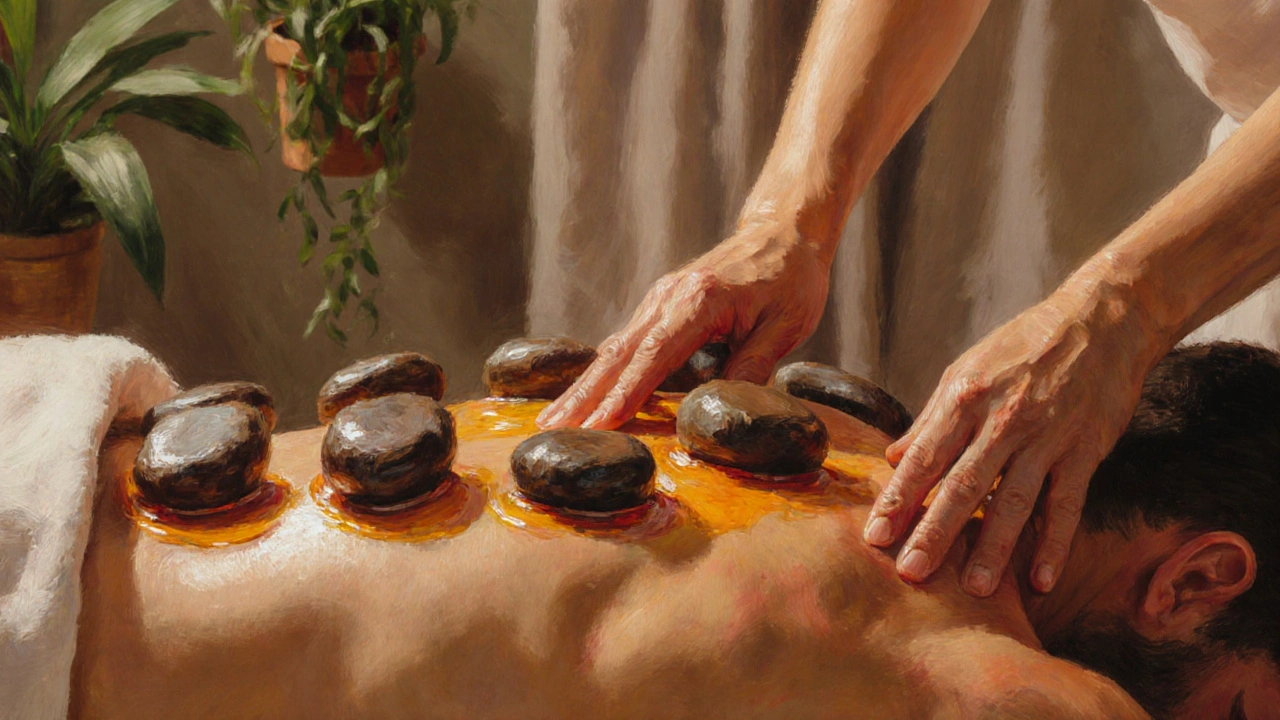
Benefits Beyond Relaxation
People come for the relaxation. They stay for the ripple effects.
- Improved sleep: The drop in cortisol and rise in serotonin help you fall asleep faster and stay asleep longer. Many clients report sleeping through the night after their first session.
- Reduced chronic pain: Heat breaks the cycle of muscle guarding. When muscles stop tensing, pain signals decrease. This is especially helpful for lower back pain, neck stiffness, and tension headaches.
- Detox support: Increased circulation helps your lymphatic system move waste products more efficiently. You won’t suddenly flush out toxins, but your body’s natural cleanup process gets a boost.
- Emotional release: The combination of warmth, touch, and quiet space can unlock stored emotions. Some people cry during or after a session-not because they’re sad, but because their nervous system finally feels safe enough to let go.
One client from Melbourne, a nurse working 12-hour shifts, said: “I used to come home and just stare at the wall. After three hot stone sessions, I started cooking again. I remembered what it felt like to be present.”
Who Should Avoid It
Hot stone massage is safe for most people-but not everyone.
Avoid it if you have:
- Open wounds, burns, or recent skin infections
- Diabetes with nerve damage (neuropathy)-you might not feel if a stone is too hot
- Blood clots or are on blood thinners
- Active cancer or are undergoing radiation
- Severe osteoporosis
- Fever or acute illness
If you’re pregnant, talk to your provider. Many therapists offer modified sessions using lighter stones and avoiding the abdomen. Always disclose your full medical history.
How Often Should You Get One
There’s no hard rule. For general stress relief, once a month keeps your nervous system balanced. If you’re dealing with chronic pain or high stress, weekly sessions for 4-6 weeks can create lasting change.
Think of it like brushing your teeth. You don’t wait until your gums bleed to do it. Regular hot stone sessions prevent tension from building up in the first place.
After your first session, you might feel a little sore-like after a good workout. That’s normal. Drink water. Rest. Your body is processing the release.
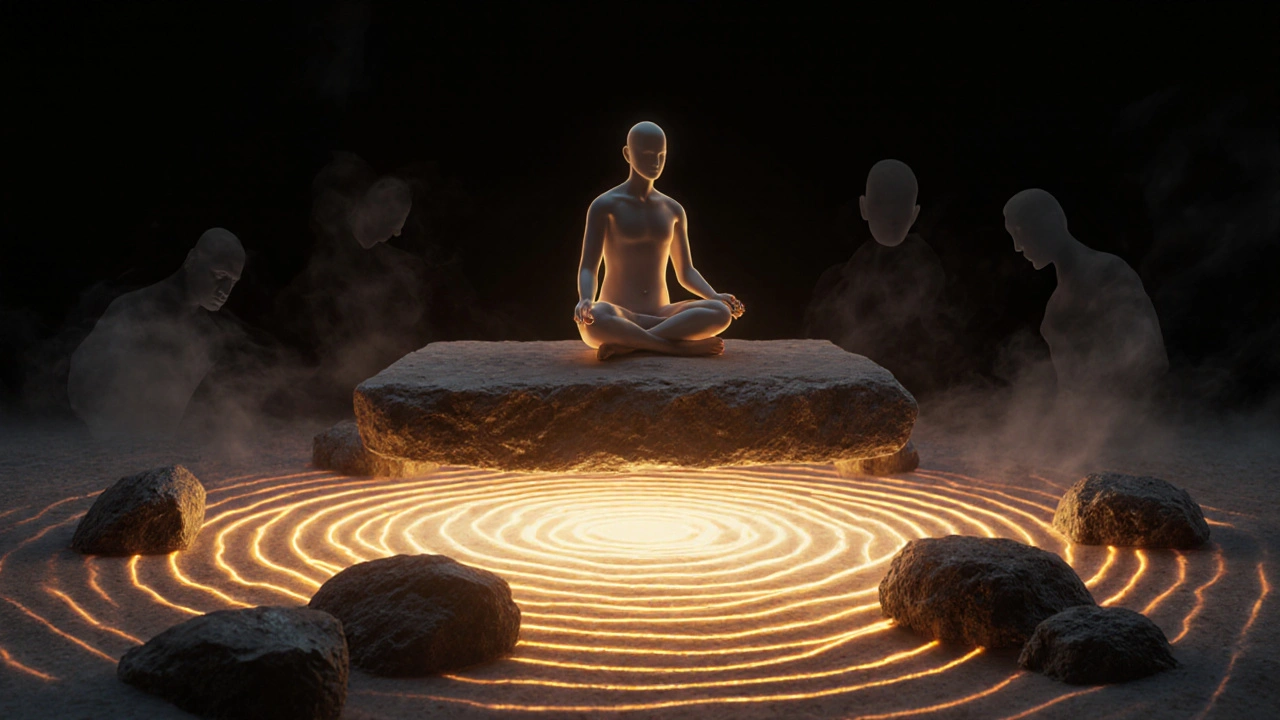
How to Find a Good Therapist
Not all spas are created equal. Look for a licensed massage therapist with specific training in hot stone techniques. Ask:
- Do you use basalt stones? (Some use marble or river rocks-these don’t hold heat as well.)
- How do you heat the stones? (They should be heated in a water bath, not a microwave.)
- What’s your temperature range? (Anything above 135°F is unsafe.)
- Can you adjust pressure and heat based on my needs?
Check reviews for mentions of safety, cleanliness, and how the therapist checked in with clients during the session. A good therapist doesn’t just move stones-they listen.
Can You Do It at Home?
You can try a simplified version at home, but it’s not the same. You won’t get the precision of a trained therapist’s hands or the full therapeutic effect.
If you want to try:
- Buy two or three basalt stones from a reputable wellness supplier.
- Heat them in a pot of water-not a microwave. Test with your wrist.
- Use a towel to hold them, never bare skin.
- Place them on your lower back or between your shoulder blades for 10-15 minutes.
- Follow with a warm bath and deep breathing.
But don’t mistake this for therapy. The real benefit comes from the combination of expert touch, controlled heat, and the quiet space a professional setting provides.
Why This Isn’t Just a Spa Trend
Hot stone massage isn’t trendy because it’s Instagrammable. It’s enduring because it works on a biological level. Your body responds to heat, weight, and rhythm in predictable, healing ways. In a world full of noise, screens, and constant stimulation, this is one of the few therapies that actually turns the volume down.
It doesn’t promise miracles. But after a session, you’ll notice something simple: you breathe deeper. You move easier. You feel lighter-not because your muscles vanished, but because your nervous system finally remembered how to relax.
That’s not magic. That’s science. And it’s waiting for you on a warm stone table.
Is hot stone massage painful?
No, it shouldn’t be painful. The stones are warm, not hot, and the pressure is gentle. If you feel any burning or sharp pain, tell your therapist immediately. They’ll adjust the temperature or remove the stone. Some people feel a deep ache as tension releases, but that’s different from pain.
How long do the effects last?
The immediate relaxation lasts 24 to 48 hours. The deeper benefits-like improved sleep, reduced muscle stiffness, and lower stress levels-can last for weeks if you get regular sessions. Think of it like exercise: one session helps, but consistency builds lasting change.
Can I get a hot stone massage if I’m pregnant?
Yes, but only with a therapist trained in prenatal massage. They’ll avoid the abdomen, use lighter stones, and keep the temperature below 125°F. Always check with your doctor first, especially in the first trimester.
Do I need to do anything after the massage?
Drink water to help your body flush out metabolic waste. Avoid caffeine or alcohol for a few hours. Give yourself time to rest-don’t jump into a busy schedule right after. Let your nervous system settle.
Are the stones cleaned between clients?
Absolutely. Reputable therapists sanitize stones with medical-grade disinfectant after each use. They’re also inspected for cracks or chips. If you’re unsure, ask to see their cleaning process-it’s a sign of professionalism.

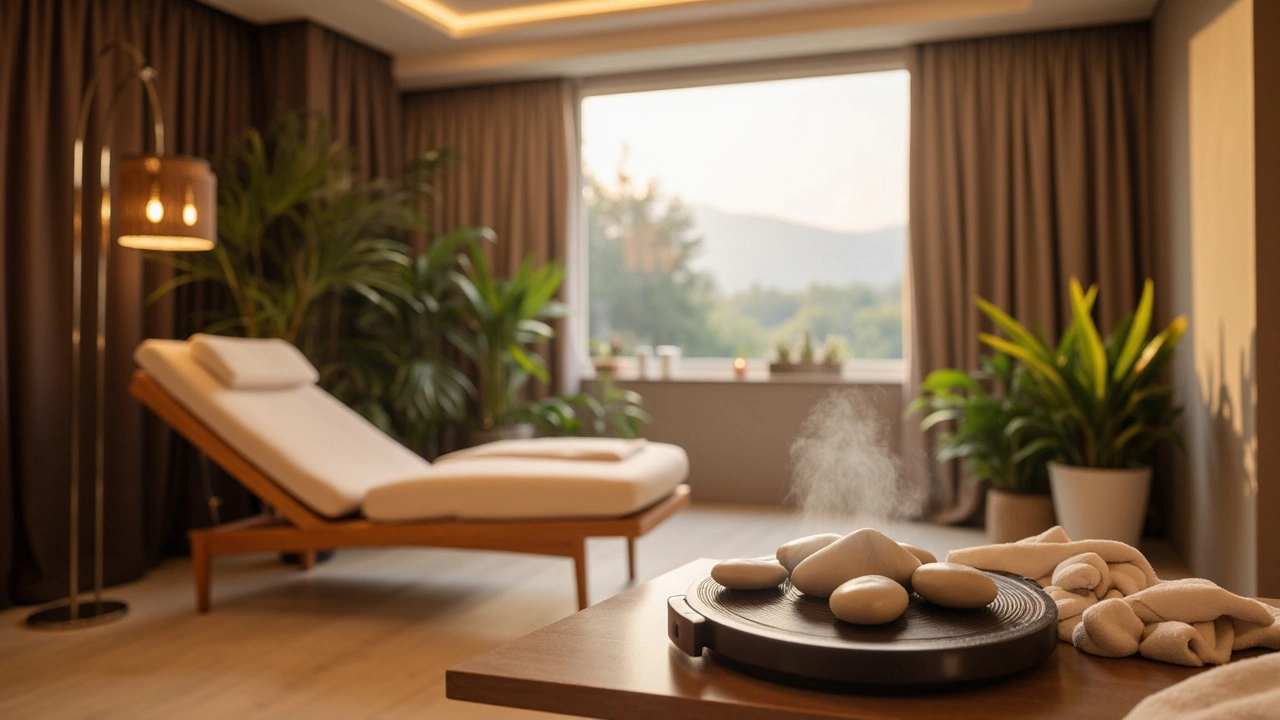
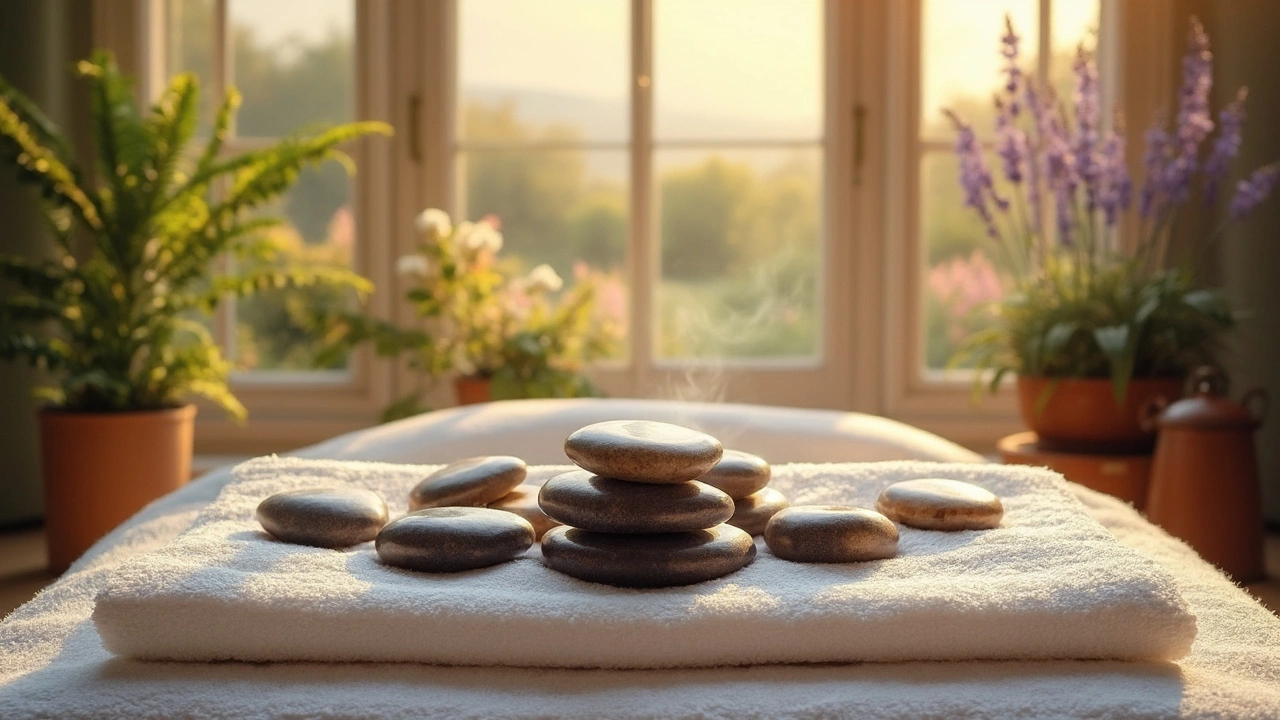
Neil Tejwani
November 8, 2025 AT 19:09Keren Ruth
November 8, 2025 AT 22:51Rhys Harley
November 10, 2025 AT 07:52Stephanie Labay
November 11, 2025 AT 13:27Mohammed Muzammil
November 11, 2025 AT 22:27Bonnie Cole
November 12, 2025 AT 03:59